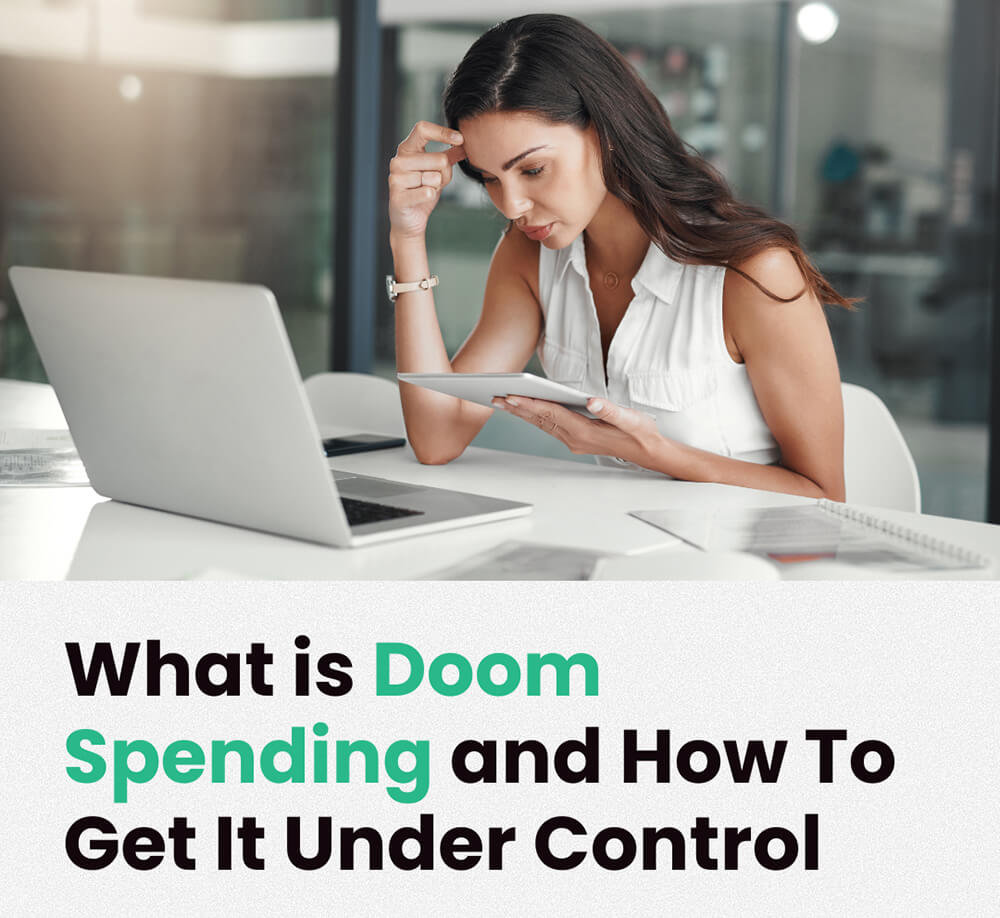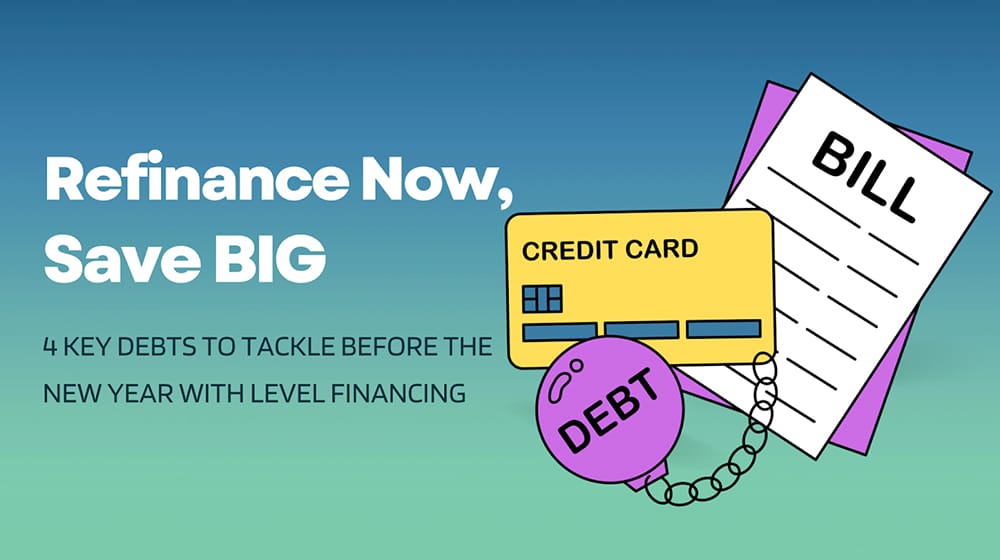Do you ever have those days where everything feels like it’s falling apart? Your stressful job, the chaotic world news, and even just little things like your phone battery dying—it all piles up and suddenly you desperately want to buy something to make yourself feel better.
So, you end up splurging on things you don’t really need and probably can’t afford.
Maybe it’s fancy takeout, the latest tech gadget, a whole new outfit, or whatever gives you that rush of happiness. But afterward, you usually feel guilty about the money you spend. You promised yourself you’d stop!
The good news is that you can control this doom-spending habit, even if it feels impossible right now!
What Makes You Doom Shop
The first step is figuring out what situations, emotions or stressors tend to spark your doom spending habits. Are there certain times, places or feelings that make you more likely to whip out your credit card for an impulse buy?
For instance, reading depressing news articles may send you straight to online shopping. Many people doom spend when they’re bored, lonely, angry, anxious, or just blue.
High-stress periods like the holidays or busy work seasons can also trigger doom spending. Even positive events like vacations and celebrations can lead to overspending out of a desire to treat yourself.
Once you identify your common triggers, you can get better at anticipating when a doom spending danger zone is approaching. That way, you can kick those coping strategies into gear!
Key Takeaway: Keeping a spending diary can help you figure out which situations, emotions, and stressors tend to trigger doom spending splurges.
Read More: Why Are Borrowers Increasingly Using Personal Loans to Tackle Credit Card Debt

How Doom Spending Hurts You
Unfortunately, the financial and mental consequences down the road are so not worth it. Let’s talk about why it’s super important to put a lid on this habit.
In the short term, doom spending can do some real damage to your budget. All those spontaneous purchases can drain your account balance, max out your credit cards, and leave you strapped for cash before the next payday. It’s not an ideal situation.
Looking further ahead, unchecked doom spending has the potential to wipe out your savings account or prevent you from saving at all. It can hold you back from important goals like buying a house, retiring comfortably, or paying for a wedding.
Key Takeaway: Giving into doom spending often wrecks budgets in the short term and sabotages big financial goals over time. It also fails as a lasting coping mechanism and creates shame.
Tricks to Avoid a Doom Spending Binge
The positive flip side is there are so many tactics you can try to avoid doom spending pitfalls.
Here are some ideas to implement:
- Make a reasonable discretionary spending budget for non-essentials and actually stick to it. Monitoring your spending helps big time.
- Block or unsubscribe from emails, apps and websites that enable your shopping habits, especially when you’re vulnerable.
- Find other healthy ways to decompress and self-soothe, like exercising, hanging with friends, or enjoying hobbies. Don’t rely solely on retail therapy.
- Carry limited cash and only 1 or 2 credit cards with low limits to force yourself to think before buying.
- Institute a waiting period for purchases over a certain dollar amount. If you still want it after a week, then go for it.
- Focus on inexpensive things like quality time with loved ones, learning, and experiences in nature that provide lasting fulfillment.
Key Takeaway: Making a spending budget, avoiding shopping outlets when triggered, finding alternative coping strategies, limiting access to funds, waiting before big purchases, and focusing on deeper fulfillment can help avoid doom spending disasters.
When to Call in Money Help
For many folks struggling with doom spending, the strategies above are super helpful for reversing course. However, for some, professional assistance may be needed. Here are a few signs it’s time to call in backup:
- Doom spending has led to major debt or wiped out your savings over time.
- Your relationships are fracturing, or your work performance is suffering because shopping has become an obsession.
- You’ve tried before to curb spending but keep sliding back into those old habits.
- You suspect an underlying mental health issue like depression or anxiety is fueling your doom spending patterns.
In scenarios like these, it’s a great idea to talk to a financial advisor, credit counselor or therapist. They can offer specialized support on how to regain control of your finances and address any emotional drivers of overspending. Don’t be ashamed to get help—it takes courage.
Key Takeaway: Seeking guidance from money pros or mental health practitioners is recommended if doom spending has significantly impacted finances, daily function, or relationships.

Creating a Healthy Money Mindset
Along with changing behaviors, nurturing a positive attitude about money can also reduce doom spending tendencies over time. Some tips:
- Clarify your financial values and priorities, like security or philanthropy, to align spending.
- Set meaningful yet realistic saving and investing goals that get you pumped up.
- Practice gratitude for what you have now rather than focusing on what you lack.
- Feel satisfied by responsible money acts like saving, budgeting, learning about finances, etc.
- Consider if purchases align with long-term goals versus providing fleeting joy.
- Allow yourself mindful splurges on occasion in ways that feel celebratory rather than self-defeating.
Key Takeaway: Identifying your money values, setting exciting financial goals, appreciating what you have, finding fulfillment in smart money habits, prioritizing lasting impact over impulsive pleasure, and rewarding yourself mindfully can all help build a healthy money mindset.
Resources to Master Your Money
Take full advantage of the amazing resources now available to help master your money management skills. Here are a few to check out:
- Budgeting apps
- Expense tracking apps
- Educational finance books, podcasts, YouTube channels
- Non-profit credit counseling services
- Fee-only financial advisors (no sketchy sales commissions)
- Frugal living blogs and communities for tips and support
Investing time into improving your financial literacy and using technology wisely can help you level up your money management major. Take it from me—these tools are game-changing!
Key Takeaway: Apps, books, non-profits, advisors, blogs, and communities focused on money management, frugality, and financial literacy can provide invaluable guidance and support.
Final Thoughts
To wrap it up, we all make poor money choices sometimes when emotions are running high—it’s just human nature! But getting stuck in a cycle of doom spending to cope can easily snowball into a huge financial and mental health burden over time.




